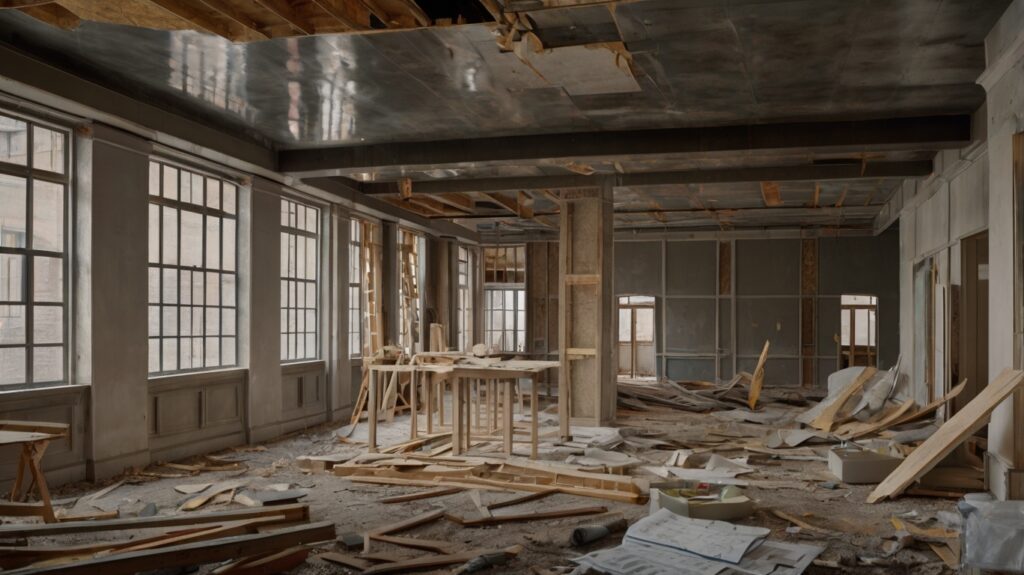- Understanding Renovation Project Risks
- Importance of Insurance in Renovation Projects
- Types of Insurance Coverage for Renovations
- Evaluating Project-Specific Risk Factors
- Cost-Benefit Analysis of Insurance Investment
- Tips for Selecting the Right Insurance Provider
- Case Studies: Insurance Savings in Renovation Projects
- Integrating Insurance into Project Management
- Future Trends in Renovation Risk Management and Insurance
Renovating a property, whether a historic home or a modern office space, involves numerous challenges and uncertainties. Managing these risks is essential for a smooth and successful renovation. Homeowners, business owners, and contractors must be proactive in identifying potential pitfalls. This means planning extensively and employing risk management strategies that include, but are not limited to, securing appropriate insurance coverage. Addressing risks early on in the process can prevent unexpected financial burdens and project delays, ensuring that the renovation stays on track and within budget.

1. Understanding Renovation Project Risks
Every renovation project carries unique risks. These risks range from unforeseen structural issues to delays caused by contractor mismanagement. Some challenges may stem from hidden damage, such as mold or termite infestations. Others might emerge from market fluctuations that could increase material costs, or from changes in building regulations during the renovation period. Proper risk assessment involves scrutinizing every aspect of the project—from initial design and planning through the finishing stages—to ensure that nothing is overlooked. Identifying potential risks is the first step toward effective mitigation.
2. Importance of Insurance in Renovation Projects
Insurance plays a critical role in protecting both the financial and physical aspects of a renovation project. It minimizes the impact of unexpected issues that could lead to significant cost overruns. Without proper coverage, even minor incidents such as water damage or minor injuries on-site can result in expenses that exceed the project budget. By investing in comprehensive insurance, stakeholders can transfer much of the potential financial risk to the insurer. This safety net not only secures the investment but also provides peace of mind, allowing project managers and homeowners to focus on interior design and finish without undue worry over potential mishaps.
3. Types of Insurance Coverage for Renovations
There are several types of insurance coverage that renovation projects should consider. General liability insurance helps cover accidents on the construction site, protecting against claims related to injuries and property damage. Builder’s risk insurance is designed to cover potential losses or damages to the structure being renovated due to events like fire, theft, or natural disasters. Professional liability insurance offers protection against claims of negligence or errors in design. Additionally, environmental liability insurance may be required if the property has issues related to hazardous materials. The combined use of these policies ensures that all aspects of a renovation project are adequately covered, creating a safety net that guards against numerous risks.

4. Evaluating Project-Specific Risk Factors
Assessing the risks associated with a renovation involves careful evaluation of the unique characteristics of the project. This includes understanding the property’s age, condition, and location. Older buildings may require additional inspections for asbestos or structural weaknesses, while properties in areas prone to natural disasters might need coverage against floods or earthquakes. Additionally, the scale of the project, the experience level of the contractors, and the timeline for completion all influence the risk profile. A thorough evaluation process involves consultations with experts, detailed site assessments, and a review of historical data related to similar renovations. Tailoring insurance coverage to these specific risks ensures that the protection received is both appropriate and comprehensive.
5. Cost-Benefit Analysis of Insurance Investment
Investing in comprehensive insurance coverage might seem like an added expense during a renovation, but when evaluated against the potential financial losses from unforeseen events, it often proves to be a cost-effective decision. A cost-benefit analysis involves comparing the premium payments against the probable costs of potential incidents. In many instances, a single occurrence—a major storm, accidental fire, or even a lawsuit—can lead to expenses that far outweigh the cost of insurance premiums. Moreover, insurance can facilitate smoother project execution by preventing budget overruns, thus protecting the overall financial health of the project. Insurance, when seen as an integral part of the project’s risk management strategy, ultimately represents an investment in the project’s long-term success.

6. Tips for Selecting the Right Insurance Provider
Choosing the right insurance provider is crucial to ensure that the coverage meets the specific needs of a renovation project. When selecting a provider, consider their level of experience within the renovation or construction industry. Look for companies with a solid reputation for handling claims efficiently and fairly. It is also important to review the specific terms of the policy to understand the extent of coverage and any exclusions that might apply. Comparing policies from multiple providers can help identify the one that offers the best overall value and flexibility. Engaging with an insurance broker familiar with renovation risks can also be beneficial, as they can provide tailored advice and negotiate better terms on behalf of the project.
7. Case Studies: Insurance Savings in Renovation Projects
Several renovation projects have benefited greatly from thoughtful insurance planning. For instance, a historic building restoration in an urban area faced unexpected structural issues during demolition. The comprehensive builder’s risk insurance significantly reduced the financial strain, enabling the project to continue without major delays. In another case, a commercial renovation was nearing completion when a severe storm damaged the unfinished exterior. Thanks to weather-related damage coverage, the additional repair costs were largely offset by the insurance payout. These examples illustrate how insurance not only mitigates potential losses but can also provide critical financial stability during unforeseen events. Such case studies highlight the tangible benefits of integrating insurance into the project’s overall risk management plan.

8. Integrating Insurance into Project Management
Successful renovation projects consider insurance as a core component of the overall management strategy. Early integration of insurance planning with the project timeline allows for the identification of potential risks right from the initial design phase. That means consulting with insurance providers during the planning stages, ensuring that the policies reflect the evolving needs of the project, and adjusting the coverage as changes arise. Even during construction, regular reviews of the policy can ensure that all new risks are being addressed promptly. By weaving insurance considerations into day-to-day project management decisions, stakeholders can ensure a smoother, less stressful renovation process where risks are continuously monitored and managed.
9. Future Trends in Renovation Risk Management and Insurance
As construction technologies and methodologies evolve, so too do the strategies for managing renovation risks. Technological advancements, such as building information modeling (BIM) and project management software, are making it easier to predict and manage risks. With improved data collection and analysis, insurance companies are increasingly capable of offering more customized policies that adjust to the specific risk profiles of projects in real time. Additionally, there is a growing trend toward incorporating sustainability criteria into both renovation projects and insurance policies. Properties designed with green building materials and energy-efficient systems may eventually benefit from reduced premiums, reflecting lower risk profiles. Furthermore, the use of drones for site inspections and remote monitoring tools is likely to become more common, thus enhancing the efficiency of both project management and claims processing. These emerging trends are paving the way for a new era in renovation risk management where technology and progressive insurance practices come together to ensure safer, more predictable outcomes.

Conclusion
In conclusion, managing the risks inherent in renovation projects requires a proactive and comprehensive approach. From understanding the diverse range of risks and the importance of insurance, to selecting the right provider and integrating coverage into the overall project management strategy, every step is crucial. The evolution of insurance practices combined with technological advancements is transforming how risks are handled, ultimately leading to more successful and resilient renovation projects.
